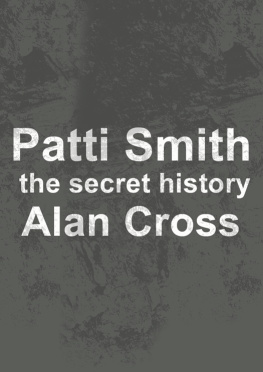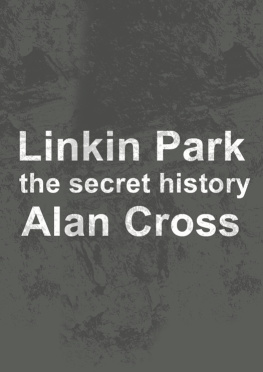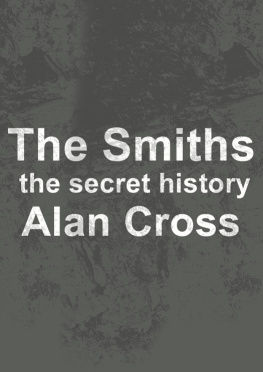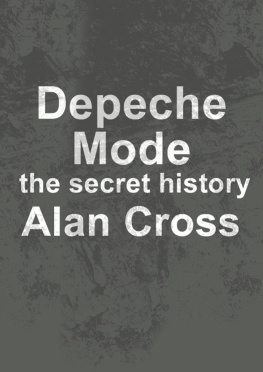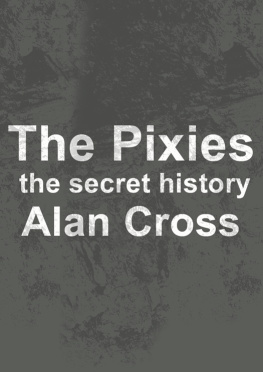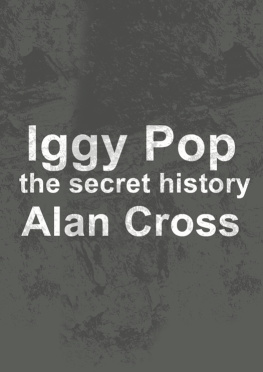The High Punk Priestess of New York
I stayed up all night with headphones on. I was 15, I think. I took it home, I put on the headphones, I sat down on the couch with a bowl of cherriesa HUGE bowland I listened to it and I couldnt take it off all night. I just sat there and listened to it, ate the whole bowl of cherriesI got sick to my stomachand went to school with no sleep.
And I was a changed person. That record was such a revelation to me that it was truly one of the defining moments of my life.
Michael Stipe of R.E.M. in an interview with the author, February 20, 1999
Few people can claim that their work has influenced several generations of artists. Patti Lee Smith is one of them. The effect of her Rimbaud-like poet-as-tragic-figure musings can be heard in everyone from R.E.M. and U2 to the most intense riot grrl bands of the 1990s. Not only did her aggressive and emotionally raw performances (such as those captured on her first three albums) serve as a musical template for much of the burgeoning art/punk movement in New York in the mid-1970s, Smith was also elevated to the role of rock and roll suffragette. By combining the power of her poetry with three chords, she revolutionized the way women were viewed by the rock establishment. If Iggy Pop is the godfather of punk, then Patti Smith may be its godmother.
As with many ultra-dramatic, ultra-legendary romantic figures, its sometimes hard to separate fact from fiction when it comes to Patti Smiths biography. Over the years, many people central to her story have been mythologized or invented along the way. So any fan should tread carefully when exploring Pattis past.
When Patti was four, the family moved to Philadelphia, where they found a house on Newhall Street on the citys north side. Although home life was fairly stable, the family was often divided along religious grounds. Beverly Ann was a devout Jehovahs Witness while Grant was an avowed atheist. No wonder Patti began to view God as a divisive force.
Patti was a sickly girl. Thin and scrawny, she had bouts of mumps, chicken pox, rheumatic fever, double pneumonia andmost serious of allscarlet fever at age seven. That illness gave her terrifying hallucinations that recurred for years.
By the time she reached her senior year at Deptford High School, Patti had immersed herself in art, especially painting. Self-conscious about her thinness, she favored a tomboy look and outsider attitude. Her yearbook noted that some of the kids gave her the nickname Natasha because of her strange habit of lapsing into a Transylvanian accent.
Still in her teens, she was forced to make ends meet with a menial job in a toy factory. Her only escape from a miserable existence was her collection of Rolling Stones and Bob Dylan albums. She was eventually fired for writing poetry on the job.
Having saved a few dollars from the factory gig and inspired by the biographies of Amedeo Modigliani and Arthur Rimbaud (see ), Patti moved to New York in the spring of 1967. Determined to lead a life of art, she soon struck up a friendship with a 19-year-old gay artist named Robert Mapplethorpe. Upon moving in together, they became muses to each other for a time. Mapplethorpe was fascinated by Pattis scarlet fever hallucinations and encouraged her to turn those experiences into something productive and perhaps even artistic. Meanwhile, Pattis neuroses and fears provided Mapplethorpe with loads of inspiration for his art.
Over the next few years, Patti worked at a series of jobs: Brentanos bookstore on Fifth Avenue, the world-famous toy retailer FAO Schwartz and, finally, Scribners bookstore, also on Fifth Avenue. In May 1969, encouraged by Mapplethorpe to explore painting and ever more curious about Rimbaud, who is buried in Paris, Patti and her sister Linda took a two-month trip there. The experience of seeing the masters in the Louvre combined with hanging out with the wannabes on the Left Bank provided Patti with a revelation: painting was not her calling. Poetry was.
she read-chanted-sung several original poems, including Oath, which begins with the lines Christ died for somebodys sins / But not mine.
and she found work writing record reviews for both Creem and Rock Scene magazines. In 1972, she published Seventh Heaven, a collection of 22 poems including tributes to doomed model Edie Sedgwick and British singer Marianne Faithfull.
After experiencing some kind of vision at the Paris grave of Jim Morrison in the summer of 1972, Patti began to think of herself as more than just a poet. When she returned to New York, she called up Lenny Kaye and explained that her new goal was a fusion of poetry and rock and roll, and that she would require his accompaniment for future readings. By the spring of 1974, a piano player was added to the performance. After a rotating cast of pianists, Richard DNV Sohl ended up with the full-time gig. The Smith-Kaye-Sohl trio bombarded audiences with a combination of poetry, improvised wordplay, free jazz, sloppy rock, cover versions and original songs.
One of the sets strongest pieces was Hey Joe, the Jimi Hendrix classic, combined with a poem entitled Sixty Days, about kidnapped heiress Patty Hearst. With a little cash put up by Robert Mapplethorpe and Lenny Kaye, the group entered Electric Ladyland Studios on June 5, 1974. They figured they needed about three hours to record the piece, after which they would release it on a seven-inch single. When they finished ahead of schedule, they decided to use up their allotted time by recording a second piece based on Pattis experience in the New Jersey toy factory. Patti read Piss Factory as Kaye and Sohl vamped in the background. The 45 was issued on a label called MER (derived from his name) and given the number 601. Just over 1,000 copies were pressed and delivered to bookstores and record shops in Manhattan.
Much to everyones shock, the single proved to be a big hit not only in New York but as far away as Los Angeles. When 1,600 copies quickly sold out, Patti and her group were asked to play a series of shows on both coasts. A shared residency with Television at Maxs Kansas City in the summer of 1974 and at CBGB in the spring of 1975 further enhanced Pattis reputation as not only a poet but a singer. When guitarist Ivan Kral joined the group (some accounts say he quit a band called Blondie to hook up with Patti), things really began to gel. By April 1975, hundreds of people were being turned away from most New York shows.
everyone returned to Electric Ladyland to start work on a full album in August and September. Referencing everything from atheism and UFOs to lesbianism, Rimbaud and Hendrix, the album was a statement of everything Patti was and wanted to be. It was art, rock and philosophy all wrapped together. Her personal description of the record was three-chord rock merged with the power of the word. The album struck a powerful note right from the opening words of her version of Van Morrisons Gloria (Jesus died for somebodys sins / But not mine) and did not let up. She called it Horses.
By the third week of November, bits of the album had begun to leak out of the Arista offices. It wasnt long before the pre-release buzz became deafening. Publications from the New York Times on down heralded it as the best album of the year. New Musical Express immediately ranked it as the best debut album of all time.
Predictably, Arista hated the picture. Clive Davis was appalled and wasted no time in pointing out that you could see some hair on Pattis upper lip. But Patti didnt care. Using the clause in her contract that gave her complete artistic control over the project, she refused all pleas by Arista to have it airbrushed out.
In the end, the artwork proved to be almost as important as the music. That photo established Patti Smith as a new breed of female performer: a raw, defiant outsider who was into more important things than appearances. In short, it was very punk.

